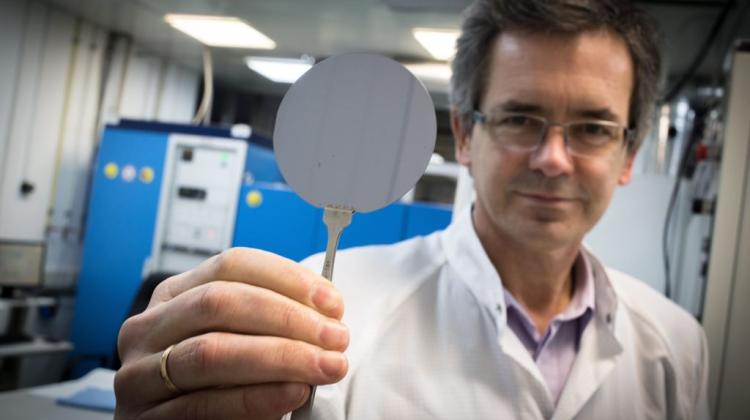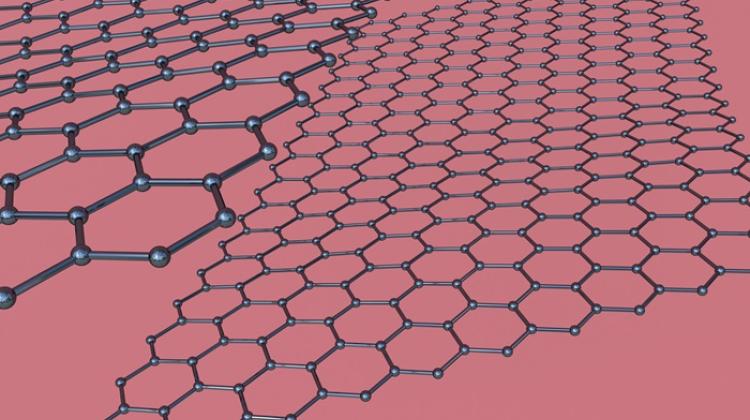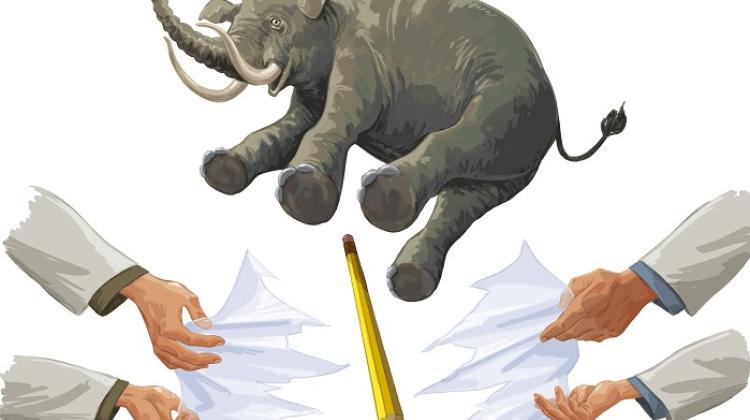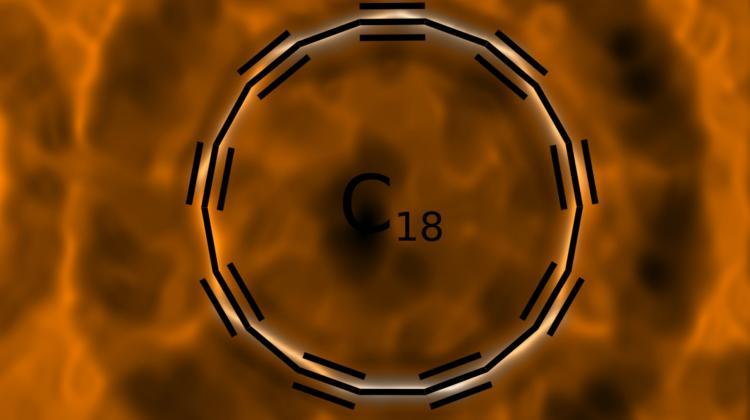Researcher on the production of graphene: Poland is in the elite, we should not waste it

We joined the elite club of countries that have the most advanced graphene production technology. This opportunity should not be wasted, said in an interview with PAP graphene researcher Dr. Włodzimierz Strupiński.
Only a decade has passed since the discovery of graphene - structure composed of a single layer of carbon, of just one atom thick. The properties of this material proved to be so unique that in just a few years, the Nobel Prize was awarded to its discoverers, Andrei Gejma and Konstantin Novoselov. Scientists from around the world, including Poland, fell in love in with studies of this material.
The world has already noticed the efforts of Poles - Poland has been entrusted with the organization of the prestigious conference Graphene Week, under the auspices of the European Commission. It took place on 13 - 17 June in Warsaw. "It\'s like the Olympics. It is not organized in a random place. In Europe, we are really appreciated when it comes to research on graphene. We should not waste this opportunity" - told PAP Dr. Włodzimierz Strupiński from the Institute of Electronic Materials Technology in Warsaw - the author of one of the high-quality graphene production methods.
"In the decade since the discovery of graphene, this material has been subject to thorough studies" - Dr. Strupiński told PAP. He admitted that initially graphene was a big mystery, and it was necessary to carry out basic research to better understand its properties. For several years, however, studies have begun to move to applications.
Scientist gave the example of tennis rackets and skis with the addition of graphene improving endurance that appeared on the market. There are also batteries whose capacity is increased through graphene. One of the Chinese companies presented phones on a flexible substrate fastened on the wrist. Their screens would be produced with the use of graphene, whose flexibility is ideal for such applications.
New ideas of scientists from all over the world are waiting for in the queue for commercialisation. Dr. Strupiński and his team are working on using graphene in invisible heating elements, which could be used in heated glass. Researchers at the Institute of Electronic Materials Technology are also working on the use of graphene in the new composites containing rubber or in magnetic field sensors. Graphene also has potential in the development of biosensors, anti-corrosion layers and flexible electronics, as well as electronics of the future. We know the topics of research projects at universities and in government laboratories, but it is difficult to even guess what private companies are working on.
"The use of graphene on an industrial scale requires the development of new technologies. How do you make something that you can not see, can not feel, and that is incredibly thin?" - asked Strupiński.
In his opinion, when it comes to the production of graphene for research purposes, Poland it has a lot to be proud of. "We have developed various technologies for graphene production and we are among the world leaders" - said the scientist.
"We already have a device that produces graphene sheets in the size of half a meter by half a meter. This is a continuous layer formed on copper foil, and it can be moved to other substrates" - reported Strupiński. He added that his institute also prepared graphene powder - flakes of micrometer size. "Not every application requires large surfaces. In inks flakes of graphene may not be too large, they must have strictly defined sizes. The trick is knowing how to produce homogeneous flakes with a predetermined size and be able to separate them" - he noted.
"We know how to produce graphene on a scale that enables application research. These are not microscopic samples. Material is in large amounts and it is good quality. If a company or factory approaches us, we can prepare as much of this material and of such quality, that it will suffice to carry out research" - said the researcher, and added: "It\'s a start. But the point is that we should also have a factory that will turn graphene into a product".
Strupiński notes that for the time being only a few places could compete with Poland when it comes to graphene production quality and quantity. But - in his opinion - as soon as there is demand for the material, companies in Asia can immediately start factories producing graphene. According to the researcher, if we do not start to develop our own such companies now, we may miss our chance.
According to the researcher in Poland they not only private companies are afraid to invest in research on graphene, but the state as well. He admitted that in 2012 the National Centre for Research and Development launched the program GRAF-TECH, whose budget is 60 million zlotys. The program benefited dozens of teams. This initiative, however, has been discontinued. "It is good that there was money from GRAF-TECH at the beginning. But it will be wasted if we do not continue. It is difficult to assume that if we start something new in an uncharted territory, after several years without further funding we will build factories" - he commented.
"Thanks to graphene we joined the elite club of countries that have the most advanced technologies. This can be used or not. Graphene is not the only proposal that results from our research. Through our work we build the base: developing new technologies, educating young people. Today graphene, in three years something else that results from research on graphene. Graphene is an example of a springboard from which we can jump. We can not continue to build from scratch and hope that we catch up with the world. We have to be half a step ahead of others" - concluded the researcher.
The conference "Graphene Week" in Warsaw was attended by approx. 600 leading researchers working on the production and use of graphene, including Nobel Prize laureates. The conference was organized by the European Commission as part of Graphene Flagship - 10-year European Union project. Its aim is to develop research on the use of graphene and other two-dimensional materials in different areas of life and the economy.
Ludwika Tomala, PAP - Science and Scholarship in Poland
lt/ agt/ mrt/
tr. RL
Przed dodaniem komentarza prosimy o zapoznanie z Regulaminem forum serwisu Nauka w Polsce.

















